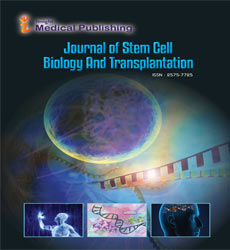ISSN : 2575-7725
Journal of Stem Cell Biology and Transplantation
PREVALENCE, SEVERITY, AND DETERMINANTS OF PAIN IN THALASSEMIA
Abstract
As the life expectancy in thalassemia is improving, pain is being recognized as an emerging problem. There is a need for prospective observational study of pain in these high risk patients. Objectives: Assess the pain prevalence, severity and impact of co-morbidities in thalassemia. Methods : All patients >10 years of age (n=165) attending Thalassemia Day Care Center of a tertiary care hospital were assessed for pain prevalence, severity and its effect on various life activities using Brief Pain Inventory. Their medical records were reviewed for the presence of various comorbidities. Results: Pain was reported by 62.4% participants with 35.2% and 59.4% participants, reporting pain in past 1 week and 4 weeks respectively. A significantly higher pain prevalence was reported in females (p=0.03), patients residing in urban areas (p=0.03) and employed participants (p=0.03). The commonest sites of pain were lower back and calves. General activity (p=0.02) and enjoyment of life (p= 0.02) were significantly effected due to pain in patients between 21 to 30 years of age. Female participants reported interference of pain with mood (p=0.03). A significant relation of pain prevalence was found with higher average serum ferritin (p = 0.015), moderate to severe liver iron concentration (p= 0.04) and lower levels of 25 hydroxy vitamin D levels (p=0.03). Conclusion: Pain is an emerging cause of morbidity in thalassemia. The study found significant association of pain with modifiable factors such as serum ferritin, LIC, 25 hydroxy vitamin D levels.
Open Access Journals
- Aquaculture & Veterinary Science
- Chemistry & Chemical Sciences
- Clinical Sciences
- Engineering
- General Science
- Genetics & Molecular Biology
- Health Care & Nursing
- Immunology & Microbiology
- Materials Science
- Mathematics & Physics
- Medical Sciences
- Neurology & Psychiatry
- Oncology & Cancer Science
- Pharmaceutical Sciences
